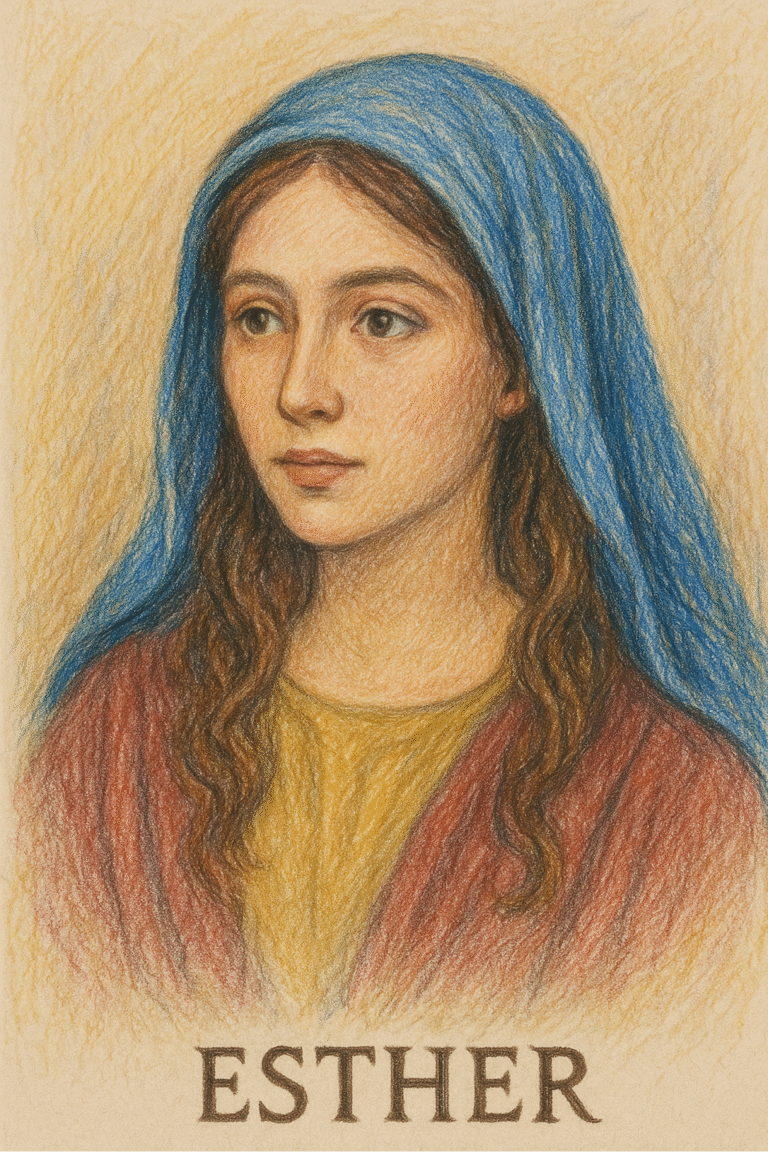
The Courageous Journey of Esther: A Summary for Today
The Book of Esther is a powerful narrative of courage, faith, and divine providence that resonates with the heart of the human experience. Set in the Persian Empire, the story of Esther revolves around themes of identity, bravery, and the significance of choosing to take action in the face of adversity. Through this summary, we will explore how Esther’s journey can inspire us to embrace our own responsibilities, act courageously for justice, and trust in a higher purpose in our lives today. This ancient tale reminds us that we, too, can make a difference and that our actions, no matter how small, can lead to monumental outcomes.
The Context of Esther
The Book of Esther takes place during the reign of King Xerxes (also known as Ahasuerus) in the Persian Empire (Esther 1:1). The Jewish people, having been exiled from their homeland, now lived under foreign rule. Despite their diminished status, God’s providence remains at work, preparing the stage for a young Jewish woman to rise to prominence and save her people from impending doom.
The Rise of Esther
The story begins with a grand feast hosted by King Xerxes, who, after a night of indulgence, summons his queen, Vashti, to display her beauty to the guests (Esther 1:10-12). When she refuses, the king is incensed. He ultimately removes her from her position (Esther 1:19). In search of a new queen, a beauty contest is proclaimed, leading to Esther, an orphaned Jewish girl raised by her cousin Mordecai, being chosen for her beauty and charm (Esther 2:7-9).
Esther’s rise in the royal court, however, is more than just a story of gaining a title; it sets the stage for a dramatic clash between good and evil. As she navigates the complexities of life in the palace, Mordecai urges her to conceal her Jewish identity (Esther 2:10). Her initial obedience reflects the precariousness of her situation—she must balance her heritage with her newfound status.
The Plot Thickens
The villain of the story emerges in the form of Haman, an influential advisor to the king, who becomes enraged when Mordecai refuses to bow to him (Esther 3:1-2). In a fit of vengeance, Haman devises a plan to annihilate all the Jews in the empire, casting lots (Purim) to choose the date of their destruction (Esther 3:7). This plot creates a critical juncture, bringing Esther’s identity and loyalty into question.
Mordecai confronts Esther through a messenger, urging her to use her influence as queen to intervene (Esther 4:8). He famously states, “For if you keep silent at this time, relief and deliverance will arise for the Jews from another place, but you and your father’s house will perish. And who knows whether you have not come to the kingdom for such a time as this?” (Esther 4:14). This moment underscores the call to action and highlights the significance of purpose in each individual’s life.
Esther’s Courageous Choice
Confronted with the gravity of the situation, Esther displays remarkable courage. She recognizes the risk involved in approaching the king without a summons, which can result in death (Esther 4:11). However, she resolves to act, demonstrating her bravery, and devises a plan to invite the king and Haman to a banquet (Esther 5:4). Here, Esther’s ability to listen, strategize, and act with wisdom is highlighted.
At the banquet, Esther reveals her Jewish identity and Haman’s plot against her people (Esther 7:3-6). The king, outraged, orders Haman to be executed on the very gallows he had prepared for Mordecai (Esther 7:10). This dramatic reversal of fortune emphasizes the theme of divine justice and the power of standing up for what is right, regardless of the consequences.
The Deliverance of the Jewish People
In the aftermath of Haman’s demise, King Xerxes issues a decree allowing the Jews to defend themselves against their attackers (Esther 8:11). With renewed hope and strength, the Jewish people arise, turning their despair into triumph, ultimately defeating their enemies and celebrating their deliverance (Esther 9:1-6).
Mordecai’s elevation to Haman’s former position demonstrates not only the providence of God but also the restoration of honor and position for the Jewish people (Esther 10:3). Esther’s bravery and her willingness to embrace her identity saved her people from destruction and reshaped the course of their history.
Conclusion: The Lasting Impact of Esther’s Story
The story of Esther serves as an enduring testament to the power of courage, faith, and advocacy in the face of injustice. The trials she faced and the choices she made resonate deeply with us today, reinforcing the importance of standing up for those who cannot stand for themselves. Her journey teaches that we all have a role to play in the fight against oppression, and that our unique circumstances may equip us to act in ways we cannot foresee.
Esther’s legacy reminds us that with courage, we can navigate the complexities of our lives and address even the most daunting challenges. As we reflect on her story, we are inspired to consider how we can take a stand, advocate for justice, and embrace our identities, fulfilling the purpose for which we have been placed in our own “kingdoms”—our homes, communities, and workplaces. Ultimately, the Book of Esther not only narrates an ancient story of deliverance but also calls each of us to be brave and act in love, standing firm in our faith and conviction.
The Power of Praying Through Fear
Now retrieving the rating.
49% OffPrayer Journal for Women: 52 Week Scripture, Devot...
Now retrieving the rating.
Praying through Every Emotion: Experiencing God's ...
Now retrieving the rating.
Now retrieving the rating.
$12.99 (as of October 2, 2025 12:10 GMT -06:00 - More infoProduct prices and availability are accurate as of the date/time indicated and are subject to change. Any price and availability information displayed on [relevant Amazon Site(s), as applicable] at the time of purchase will apply to the purchase of this product.)Now retrieving the rating.
$9.99 (as of October 2, 2025 12:10 GMT -06:00 - More infoProduct prices and availability are accurate as of the date/time indicated and are subject to change. Any price and availability information displayed on [relevant Amazon Site(s), as applicable] at the time of purchase will apply to the purchase of this product.)Now retrieving the rating.
$9.99 (as of October 2, 2025 12:12 GMT -06:00 - More infoProduct prices and availability are accurate as of the date/time indicated and are subject to change. Any price and availability information displayed on [relevant Amazon Site(s), as applicable] at the time of purchase will apply to the purchase of this product.)18% Off
Now retrieving the rating.
8% OffNow retrieving the rating.
19% OffNow retrieving the rating.
$48.99 ($4.90 / Count) (as of October 2, 2025 12:10 GMT -06:00 - More infoProduct prices and availability are accurate as of the date/time indicated and are subject to change. Any price and availability information displayed on [relevant Amazon Site(s), as applicable] at the time of purchase will apply to the purchase of this product.)Now retrieving the rating.
$15.99 (as of October 2, 2025 12:10 GMT -06:00 - More infoProduct prices and availability are accurate as of the date/time indicated and are subject to change. Any price and availability information displayed on [relevant Amazon Site(s), as applicable] at the time of purchase will apply to the purchase of this product.)Color Me Blessed Inspirational Adult Coloring Book...
Now retrieving the rating.
30% OffFor I Know The Plans I Have For You Coloring Book ...
Now retrieving the rating.
20% OffMy Favorite KJV Verses to Color - Inspirational Ad...
Now retrieving the rating.
46% OffCreative Haven Beautiful Bible Blessings Coloring ...
Now retrieving the rating.
7% OffRYVE Christian Coloring Books for Adults and Teens...
Now retrieving the rating.
23% OffSimple Christian: Coloring Book Devotional for Kid...
Now retrieving the rating.
$7.99 (as of October 2, 2025 09:56 GMT -06:00 - More infoProduct prices and availability are accurate as of the date/time indicated and are subject to change. Any price and availability information displayed on [relevant Amazon Site(s), as applicable] at the time of purchase will apply to the purchase of this product.)Who You Are In Christ Coloring Book: For Teens and...
Now retrieving the rating.
$11.99 (as of October 2, 2025 09:56 GMT -06:00 - More infoProduct prices and availability are accurate as of the date/time indicated and are subject to change. Any price and availability information displayed on [relevant Amazon Site(s), as applicable] at the time of purchase will apply to the purchase of this product.)The Psalms in Color - Inspirational Coloring Book ...
Now retrieving the rating.
25% OffTwoDays Christian Wall Art, Vintage Bible Verses G...
Now retrieving the rating.
$12.99 (as of October 1, 2025 16:50 GMT -06:00 - More infoProduct prices and availability are accurate as of the date/time indicated and are subject to change. Any price and availability information displayed on [relevant Amazon Site(s), as applicable] at the time of purchase will apply to the purchase of this product.)The Stone Wall: (An Amish Christian Fiction Love T...
Holy Spirit You are Welcome Here Wall Decor Art 32...
Bible Verse Wall Art Scripture Christian Wall Deco...
Now retrieving the rating.
$25.99 (as of October 1, 2025 16:51 GMT -06:00 - More infoProduct prices and availability are accurate as of the date/time indicated and are subject to change. Any price and availability information displayed on [relevant Amazon Site(s), as applicable] at the time of purchase will apply to the purchase of this product.)FYARTKJ 9Pcs Bible Verse Wall Art Prints Christian...
Joocrise Scripture Christian Wall Art Set of 3 Bei...
Now retrieving the rating.
Shwing Vintage Christian Scripture Wildflower Canv...
Now retrieving the rating.
$32.99 (as of October 1, 2025 16:51 GMT -06:00 - More infoProduct prices and availability are accurate as of the date/time indicated and are subject to change. Any price and availability information displayed on [relevant Amazon Site(s), as applicable] at the time of purchase will apply to the purchase of this product.)Houmury Set of 3 Framed Farmhouse Bible Verses Wal...
Now retrieving the rating.
$35.99 (as of October 1, 2025 17:21 GMT -06:00 - More infoProduct prices and availability are accurate as of the date/time indicated and are subject to change. Any price and availability information displayed on [relevant Amazon Site(s), as applicable] at the time of purchase will apply to the purchase of this product.)When God Whispers Your Name: Discover the Path to Hope in Knowing that God Cares for You (The Bestseller Collection)
Now retrieving the rating.
A Love Worth Giving: Living in the Overflow of God's Love (The Bestseller Collection)
Now retrieving the rating.
$14.49 (as of October 1, 2025 18:16 GMT -06:00 - More infoProduct prices and availability are accurate as of the date/time indicated and are subject to change. Any price and availability information displayed on [relevant Amazon Site(s), as applicable] at the time of purchase will apply to the purchase of this product.)Jesus: The God Who Knows Your Name
Fearless: Imagine Your Life Without Fear
Now retrieving the rating.
You Are Mine (Based on the Best Seller by Max Lucado) DVD Read & Sing Along Stories, Songs, Vocabulary, Learn in 2 languages (English, Spanish)
Now retrieving the rating.
No Wonder They Call Him the Savior: Discover Hope in the Unlikeliest Place (The Bestseller Collection Book 4)
Now retrieving the rating.
$11.99 (as of October 1, 2025 22:03 GMT -06:00 - More infoProduct prices and availability are accurate as of the date/time indicated and are subject to change. Any price and availability information displayed on [relevant Amazon Site(s), as applicable] at the time of purchase will apply to the purchase of this product.)And the Angels Were Silent (The Bestseller Collection)
Now retrieving the rating.
What Happens Next Bible Study Guide plus Streaming Video: A Traveler’s Guide through the End of This Age
Now retrieving the rating.
$12.99 (as of October 1, 2025 15:07 GMT -06:00 - More infoProduct prices and availability are accurate as of the date/time indicated and are subject to change. Any price and availability information displayed on [relevant Amazon Site(s), as applicable] at the time of purchase will apply to the purchase of this product.)Ecation Bible Verses Bracelets Bulk Scripture Sili...
Now retrieving the rating.
$14.99 (as of October 2, 2025 09:56 GMT -06:00 - More infoProduct prices and availability are accurate as of the date/time indicated and are subject to change. Any price and availability information displayed on [relevant Amazon Site(s), as applicable] at the time of purchase will apply to the purchase of this product.)WALLFID 2pcs Daily Bible Verse Bracelet with NFC,E...
$3.99 (as of October 1, 2025 16:39 GMT -06:00 - More infoProduct prices and availability are accurate as of the date/time indicated and are subject to change. Any price and availability information displayed on [relevant Amazon Site(s), as applicable] at the time of purchase will apply to the purchase of this product.)ALiLuYa Proverbs 3:5–6 Bracelet – 925 Sterling Sil...
Now retrieving the rating.
$32.98 (as of October 1, 2025 16:39 GMT -06:00 - More infoProduct prices and availability are accurate as of the date/time indicated and are subject to change. Any price and availability information displayed on [relevant Amazon Site(s), as applicable] at the time of purchase will apply to the purchase of this product.)Morse Code Bracelets for Women, Joshua 1:9 Christi...
Now retrieving the rating.
$21.99 (as of October 2, 2025 09:56 GMT -06:00 - More infoProduct prices and availability are accurate as of the date/time indicated and are subject to change. Any price and availability information displayed on [relevant Amazon Site(s), as applicable] at the time of purchase will apply to the purchase of this product.)EYxsaxenk NFC Bible Verse Bracelet - 8Pcs Colorful...
Now retrieving the rating.
$16.99 (as of October 2, 2025 09:56 GMT -06:00 - More infoProduct prices and availability are accurate as of the date/time indicated and are subject to change. Any price and availability information displayed on [relevant Amazon Site(s), as applicable] at the time of purchase will apply to the purchase of this product.)100 Pcs Bible Verse Bracelets Christian Scripture ...
Now retrieving the rating.
$23.99 (as of October 2, 2025 09:56 GMT -06:00 - More infoProduct prices and availability are accurate as of the date/time indicated and are subject to change. Any price and availability information displayed on [relevant Amazon Site(s), as applicable] at the time of purchase will apply to the purchase of this product.)Yappy The Original Bible Verse Bracelets, Daily Bi...
Now retrieving the rating.
$17.95 (as of October 2, 2025 09:56 GMT -06:00 - More infoProduct prices and availability are accurate as of the date/time indicated and are subject to change. Any price and availability information displayed on [relevant Amazon Site(s), as applicable] at the time of purchase will apply to the purchase of this product.)EYxsaxenk NFC Bible Verse Bracelet Set - 16Pcs Col...
$22.99 (as of October 1, 2025 16:39 GMT -06:00 - More infoProduct prices and availability are accurate as of the date/time indicated and are subject to change. Any price and availability information displayed on [relevant Amazon Site(s), as applicable] at the time of purchase will apply to the purchase of this product.)NIV, Bible for Teens, Thinline Edition, Leathersof...
Now retrieving the rating.
NIV Study Bible, Fully Revised Edition (Study Deep...
Now retrieving the rating.
Wonder Bible NIV- The Audio Bible Player That You ...
Now retrieving the rating.
$36.99 (as of October 2, 2025 09:56 GMT -06:00 - More infoProduct prices and availability are accurate as of the date/time indicated and are subject to change. Any price and availability information displayed on [relevant Amazon Site(s), as applicable] at the time of purchase will apply to the purchase of this product.)NIV, The Woman's Study Bible, Cloth over Board, Pi...
Now retrieving the rating.
The Holy Bible, English Standard Version (without ...
$0.00 (as of October 1, 2025 18:19 GMT -06:00 - More infoProduct prices and availability are accurate as of the date/time indicated and are subject to change. Any price and availability information displayed on [relevant Amazon Site(s), as applicable] at the time of purchase will apply to the purchase of this product.)Personalized NIV Journaling Bible | New Internatio...
Now retrieving the rating.
$69.99 (as of October 1, 2025 18:16 GMT -06:00 - More infoProduct prices and availability are accurate as of the date/time indicated and are subject to change. Any price and availability information displayed on [relevant Amazon Site(s), as applicable] at the time of purchase will apply to the purchase of this product.)Farm and Posh NIV Bible, Custom Holy Bible, New In...
$69.99 (as of October 1, 2025 18:19 GMT -06:00 - More infoProduct prices and availability are accurate as of the date/time indicated and are subject to change. Any price and availability information displayed on [relevant Amazon Site(s), as applicable] at the time of purchase will apply to the purchase of this product.)The One Year Chronological Bible NIV (Softcover)
Now retrieving the rating.



![[Exodus 15:26 NIV] He said, "If you listen carefully to the LORD your God and do what is right in his eyes, if you pay attention to his commands and keep all his decrees, I will not bring on you any of the diseases I brought on the Egyptians, for I am the LORD, who heals you."](https://ourbiblejourney.com/wp-content/uploads/2022/09/2000-Exodus-1526-NIV-232x300.jpg)

































































































































